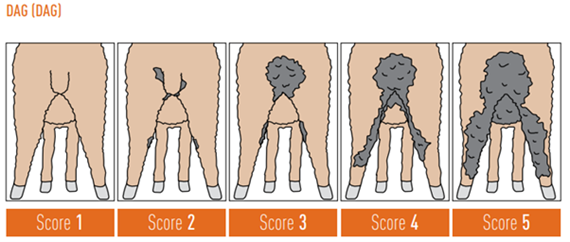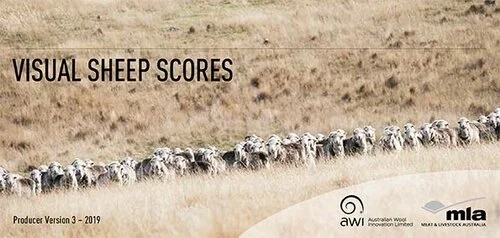Managing Dags
The prolonged wet season has resulted in excessive feed growth and moisture levels and ideal conditions for worm burdens. Hence, producers may have noticed more daggy sheep in their flocks.
Excessive dags, in conjunction with urine stain in ewes, can increase the susceptibility of an animal to breech strike and can also indicate the worm resistance level within your flock.
Understanding the cause and appropriate treatment for dag is an important first step and overall effective management of dags and scouring is essential for reducing this susceptibility risk.
Measurement can be key to assessing risk
In a non-mulesed operation, measuring dag and urine score is critical in managing breech strike during favourable conditions. Both dag and urine stain are heritable traits which means there is opportunity to select for animals that are more favourable for these traits.
Using the AWI visual score guide booklet, all producers, not only non-mulesed operations, can assess their flock’s level of risk.
If at least 20% of their mob present with an average score of 2 or 3, producers should look to additional measures to mitigate the risk, such as crutching, drenching, or genetic selection.
The local land services NSW suggests the best time to assess dag and urine score is during spring, prior to shearing or crutching.
Alternatively, producers can conduct worm egg count tests on susceptible flocks to determine, firstly the cause of the flock’s worm burden and secondly, their level of insecticide resistance.
Genetic selection as a preventative tool
As the industry shifts from highly wrinkled to plainer bodied sheep, more and more producers are choosing to go non-mulesed and with this, they are required to increase monitoring for dags and urine stain, among other things.
Genetic selection is a tool that can assist the susceptibility of your flock to high dag score and its subsequent risks over time. Selection decisions to consider include:
Selecting rams with ASBVs for low dag score and low breech wrinkle.
*Note, there is currently no ASBV for urine stain but this may change in the future as more data for this trait is entered into the Sheep Genetics database.
Removing animals with dag scores of 4 and 5 or high WECs as the heritability of worm resistance is at least 25%.
As there is a large variation in faecal WEC results within a mob, it is easier to identify individual animals that are more resistant than others in the group. However, in environments where dag is sporadic and only some animals are affected, it can be better resolved through management rather than selection pressure.
Other tools
The Flyboss and Wormboss websites have information and tools to assist you in making informed deciisons when it comes to your management strategies. They can be accessed via the links below:



